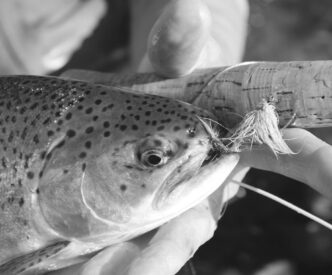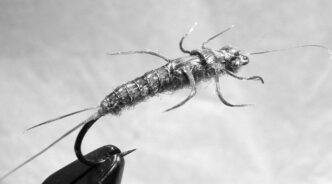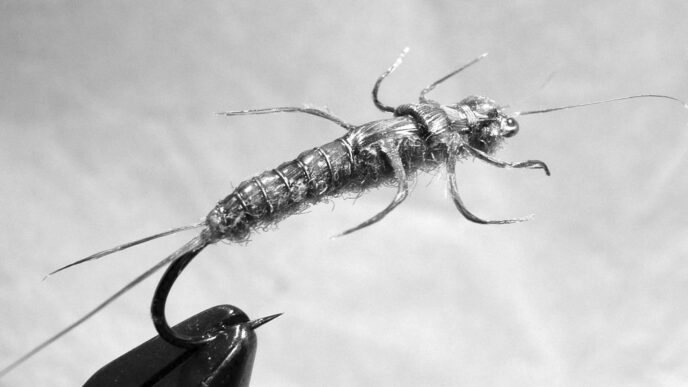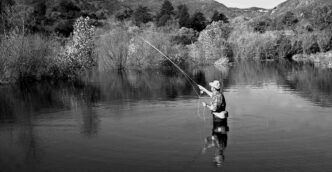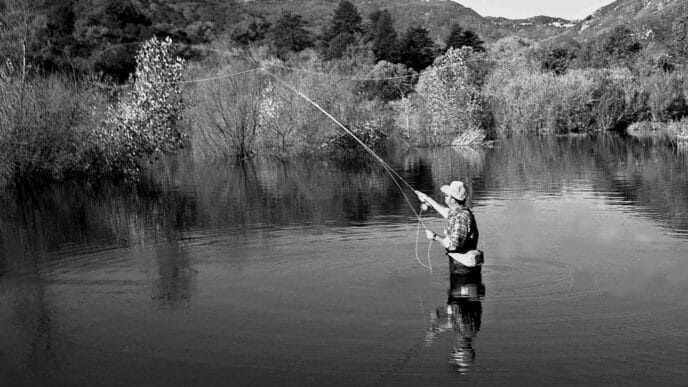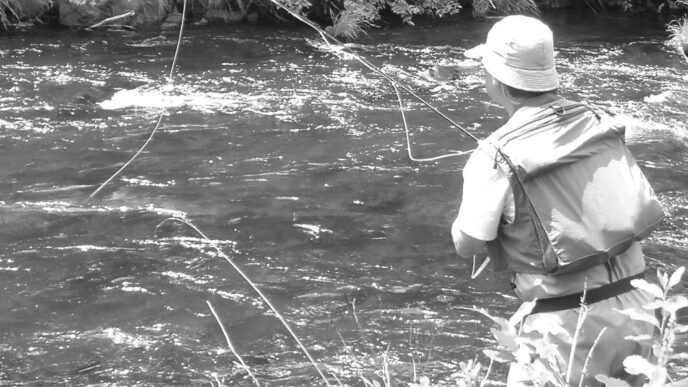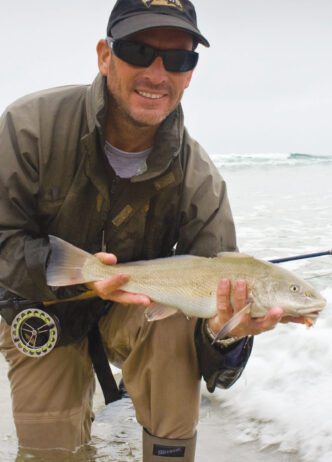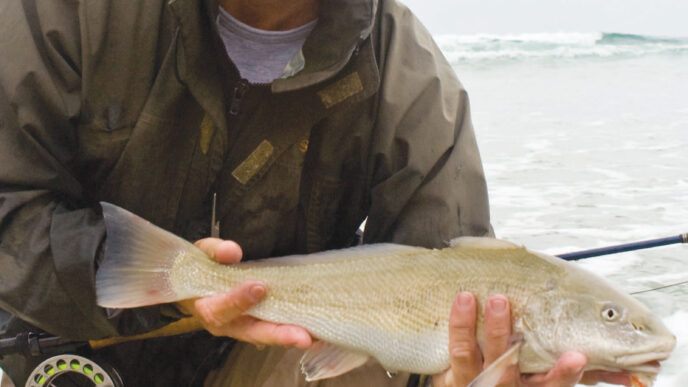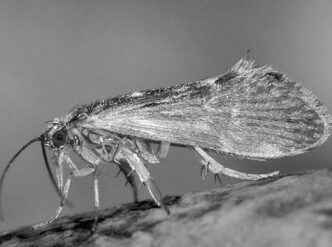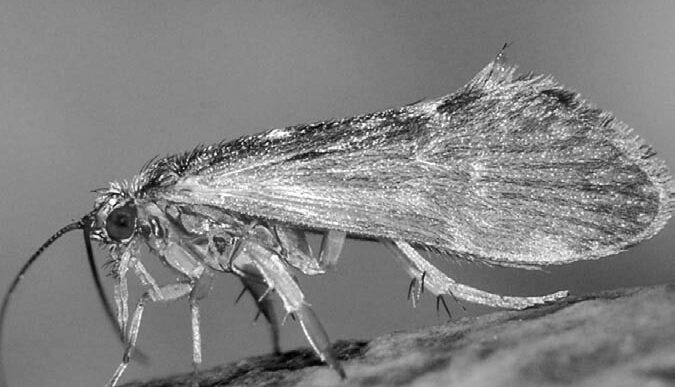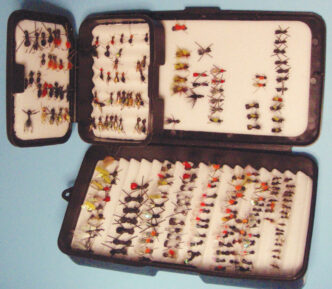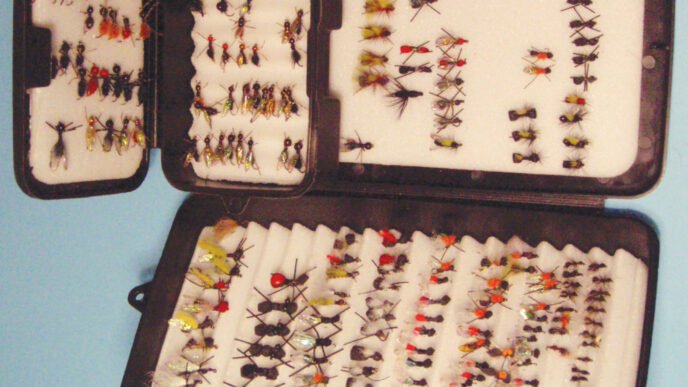Trout biologist Robert Butler says, “Large trout, especially brown trout, taken by the angler only at night, yet not taken with electrofishing gear by biologists during the day, are called rogue trout.” Rogue trout apparently think outside the box. So should you.
Most trout hold in current seams, under overhanging vegetation, amid logjams, or under cut banks. When diving in rivers, I find most large brown trout lurking between boulders where debris has been strained and trapped by the current. Hiding behind the tangled web of sticks, logs, and plastic bags, these fish have ample opportunity to eat the random crayfish or sculpin that unwittingly tries to share its domain. It is the perfect lie for very big trout — but these aren’t rogues.
Rogue trout routinely do the bizarre. They bury themselves deep inside gravel beds and spend the daylight hours in quiescence as anglers and electrofishing biologists tread overhead. Only when it is pitch dark do the rogues erupt from the gravel to roam the stream in search of food. At the Sagehen Creek research facility north of Truckee, Butler writes in Trout (Stackpole Books, 1991), “I have often see huge brown trout burst from the gravel when the light was so dim I could not film their remarkable behavior. And in the early morning . . . these rogue trout would literally swim into the gravel bottom, headfirst, and so bury themselves.”
In near pitch darkness, the rogues likely navigate via a combination of water sounds, memory of the terrain, and water displacement pressure waves against their lateral lines. They eat anything that will fit in their mouths. Sagehen Creek flows into Stampede Reservoir, where biologist Russ Wickwire netted a 12-pound brown with two full-grown chipmunks in its stomach. Just as the most successful trout think outside the box, so do the most successful anglers. This fact was driven home in a recent trip to Patagonia. From a mother ship cruising the Chilean coast, we took daily helicopter flights into the Andes, where, with the best regional guides money can buy, we fished virtually untouched rivers, lakes, and streams for rainbows and brown trout. It would have been a dream come true had I ever even dreamt it in the first place.
Like guides anywhere, ours did what worked. What worked was primarily swinging streamers. Streamers worked, but they worked to the point of monotony. Fortunately, several weeks before our trip, Xavier Carbonett of the California Fly Shop tossed a few mouse patterns into Alex McHuron’s fly box. Alex reported that they produced in spectacular fashion, and, suitably forewarned, I stayed up until the wee hours tying herds of mice.
Even while working as a guide in Alaska during a good mouse year, I have never experienced fish so eager to blast a swimming mouse. For the second half of the trip, Lisa and I fished only the rodent. Going rogue and thinking outside the box can lead to things like that. Thanks, Alex.
Going rogue can be as simple as drifting a nymph in the high-velocity sections of the water column, rather than bouncing it along the bottom. This was brought to my attention while filming trout in a high-Sierra river. I anticipated shooting at substrate level, but as soon as I dropped below the surface, it was apparent that all the feeding trout were working the laminar slipstream in the core of the current. Trout are so hydrodynamically designed that the fast current has little effect on their metabolic expenditure. A bend of the tail, and they ferry right or left; a tilt of the pectoral fins, and they rise and dip in the river. Like buzzards in a thunderstorm, they effortlessly glide amid the most tumultuous currents the river can deliver.
Sierra rivers are not known for their insect productivity, and this one was no exception. Bugs were being delivered at a meager rate, and the highest number of bugs per minute were obviously being delivered in the quickest flows. Since then, I’ve made a point of testing the fastest currents with my fly, instead of following the popular strategy of putting on a bunch of lead to keep the fly rolling along the streambed. At times, the rewards have been great.
Going rogue can also mean fishing where other people don’t. In most people’s minds, this means hiking miles from the trailhead, but in reality, there are zillions of spots overlooked on even the most heavily fished waters. How often have you deliberately cast your fly into a brush pile, into overhanging alder branches, or allowed it to drift into a logjam? Probably not too often. Try fishing a popping bug or streamer with a short, stiff, 15-pound or stronger leader the next time you visit your favorite trout stream. Maxima is a favorite monofilament for this technique. If you tie your own flies, consider adding a weed guard. Cast this rig into the most gnarly stuff you can find. Of course, you will lose some flies, but probably not nearly as many as might be expected. The heavy tippet allows you to free the hook from most snags, but even more importantly, the stiff Maxima generally refuses to wrap around branches and tie itself in knots. In these most secure locations live the best trout, and though you might break off a few, your odds are better than if you never cast to them at all.
Going rogue means doing something other than the obvious. Try working a streamer during a hatch. When using streamers, try holding your rod tip at the bottom of the river. It will make your fly swim deep during the entire retrieve. Skate your fly when everyone else is perfecting a drag-free drift. Put floatant on a nymph, or fish a dry fly under a split shot.
Perhaps the most counterintuitive thing to do is to leave the gear in the truck the next time you go fishing. Head for the river, sit down, and simply watch. Chances are good you will learn something that you never knew before.



